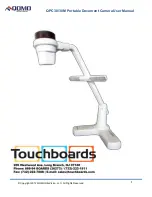
Figure 29
TAB ON
RESISTOR RING
SPRING ON
EXPOSURE-COMPENSATION
LEVER
Figure 31
Next seat the upper brass bushing. Fig.
25. Two tabs on the underside of the up
per brass bushing fit into the tw o slots of
the lower brass bushing. Fig. 29. Also,
the ends of the spring attached to the
exposure-compensation lever, Fig. 29,
must come against the outer circum
ference of the upper brass bushing.
Finally, seat the film-speed dial w ith its
slot over the tab on the film-speed brush.
Fig. 30. Replace the black plate (the plate
w ith the compensation calibrations) so
that the film-speed w indow is over the
film-speed calibrations. Then rotate the
black plate until you feel its tab drop into
one of the slots in the upper brass
bushing.
CHECKING THE FILM-SPEED
RESISTOR
W ith the top cover removed, you can
see the parts of the film-speed resistor.
Fig. 31. If you know you're going to
rem ove the fro n t-p la te /m irro r-c a g e
assembly, lift out the film-speed lock, the
lower brass bushing, and the film-speed
brush.
However,
if you're trouble
shooting or adjusting the camera,
reassemble the film-speed dial.
Why? W ith the film-speed dial remov
ed, the film-speed brush doesn't make
firm contact w ith the resistor ring, Fig.
31. The camera then exhibits the symp
toms of an open film-speed resistor:
- only the overrange LED turns on
- the diaphragm always stops down
fully in the S mode
- th e s h u tte r delivers o n ly the
mechanical speed (1/1000 second) in
either automatic mode.
Even w ith the film-speed dial reas
sembled, there's a trick to setting the film
speed. W ith the top cover removed,
neither the film-speed lock nor the
exposure-compensation lever keys to
anything. You must set both parts in their
proper positions before the film-speed
setting is valid.
A detent spring on the bottom of the
resistor ring provides the click stops for
the compensation settings. The detent
spring catches one of five detent slots in
the rewind-shaft support plate. Fig. 31.
First turn the exposure-compensation lever
until the detent spring seats in the center
slot; that's the "norm al" position. The two
slots on each side of the "norm al" position
provide the intentional overexposure and
underexposure settings.
Next rotate the film-speed lock to align
the " 0 " compensation calibration w ith
the index on the compensation lever. As
long as the " 0 " calibration remains align-














































